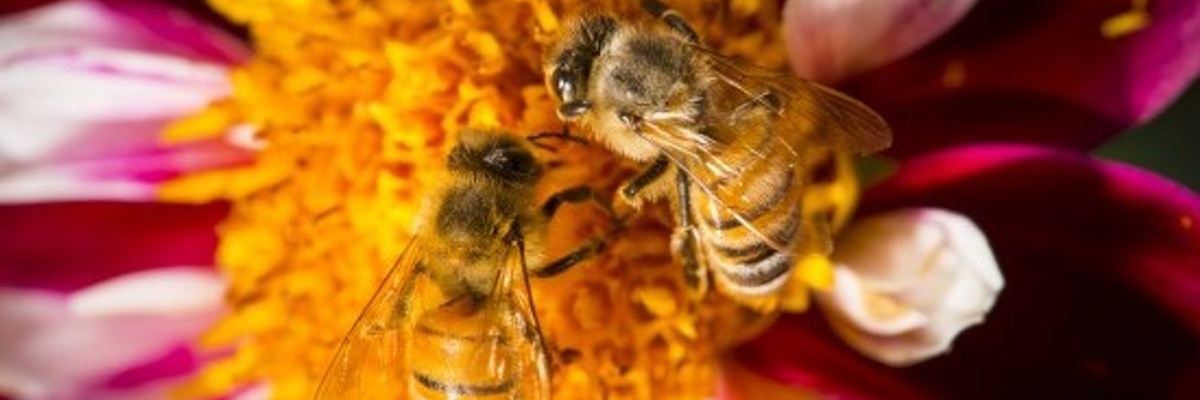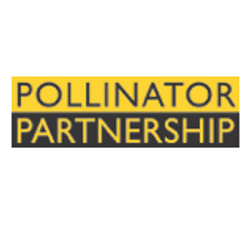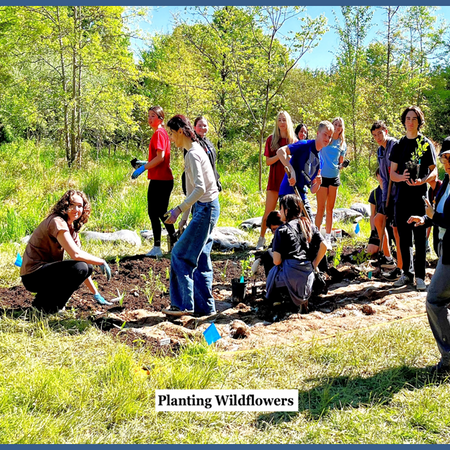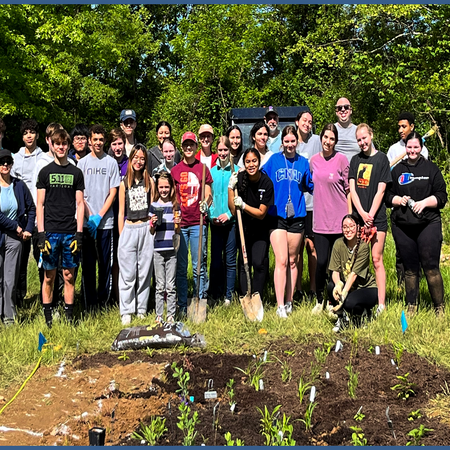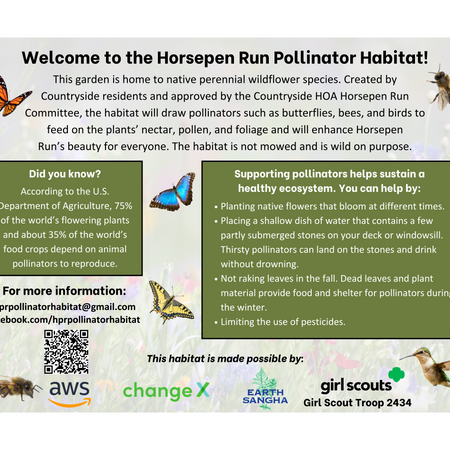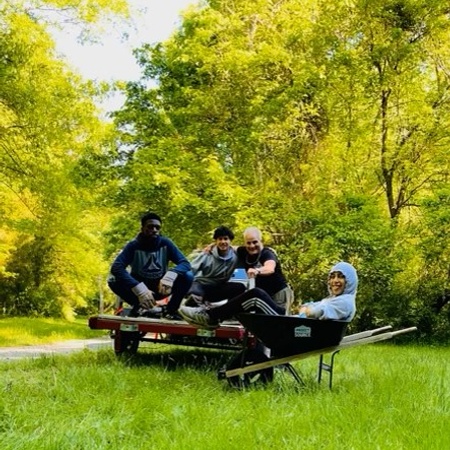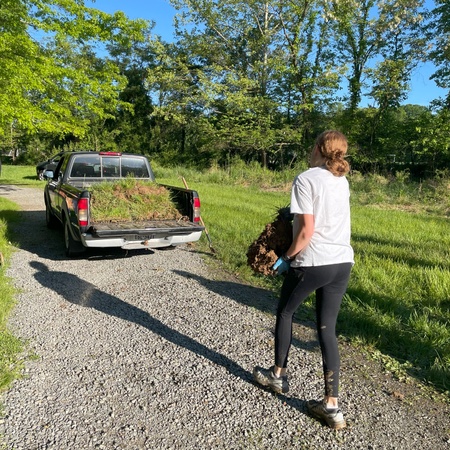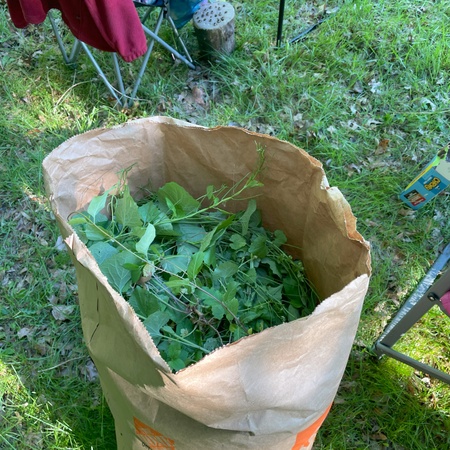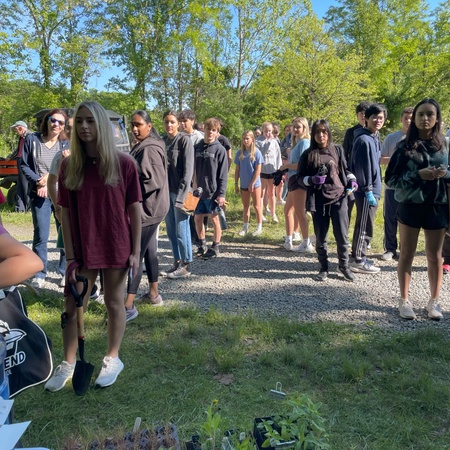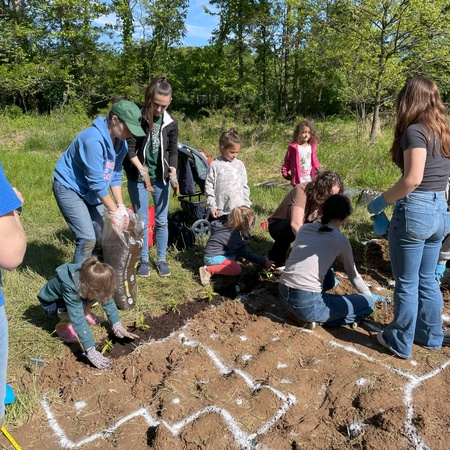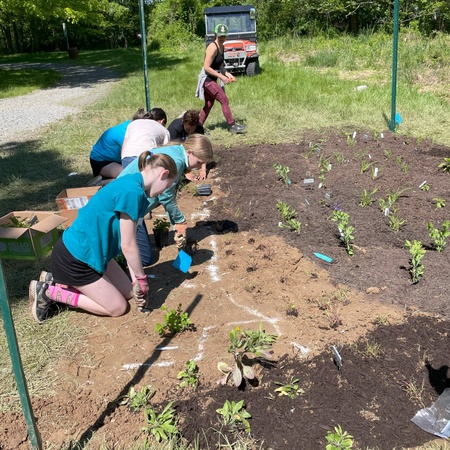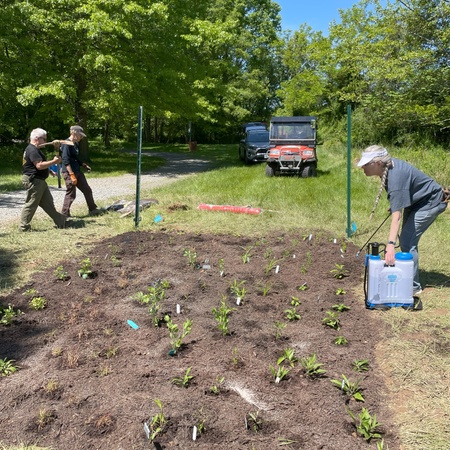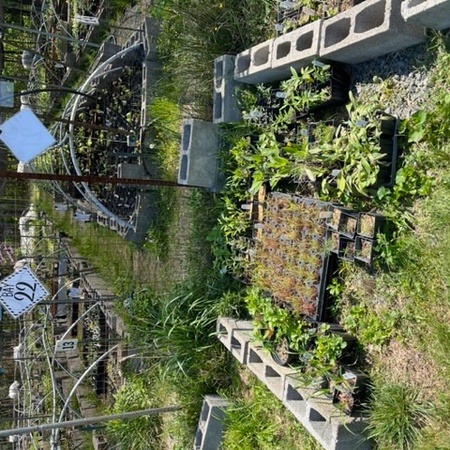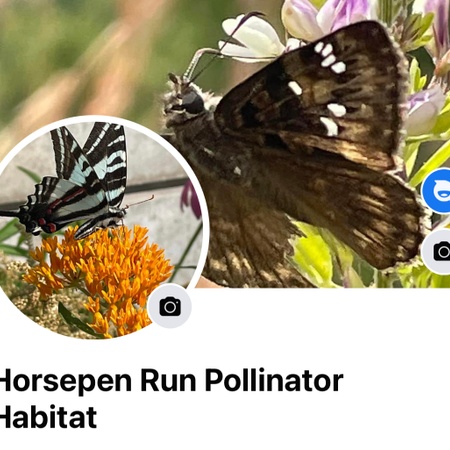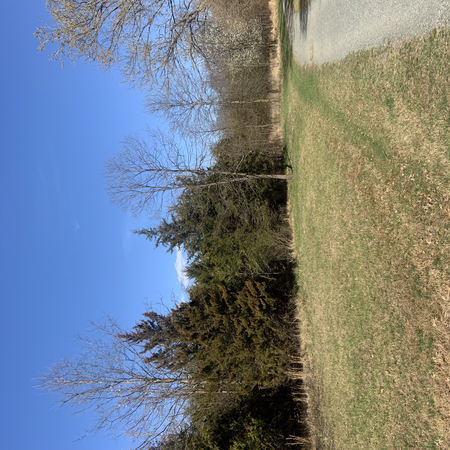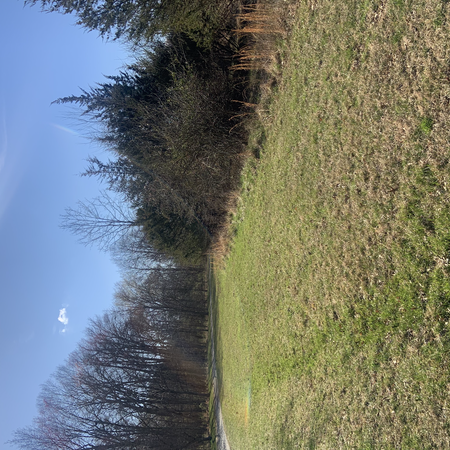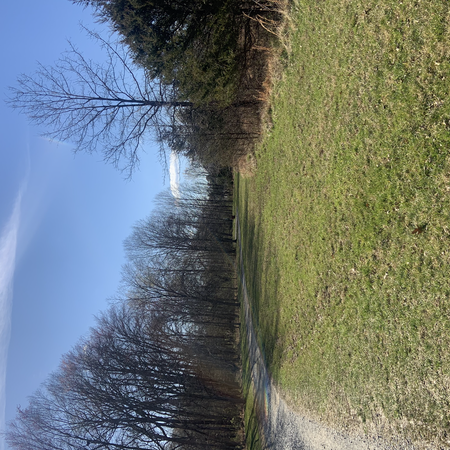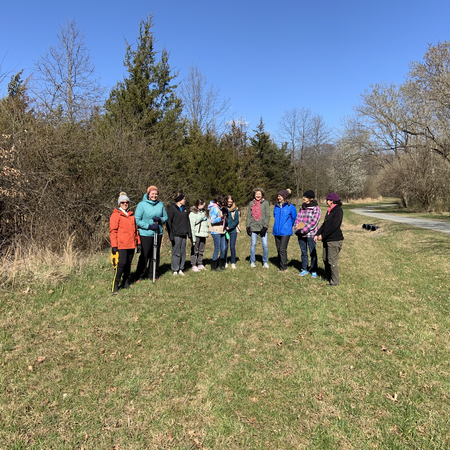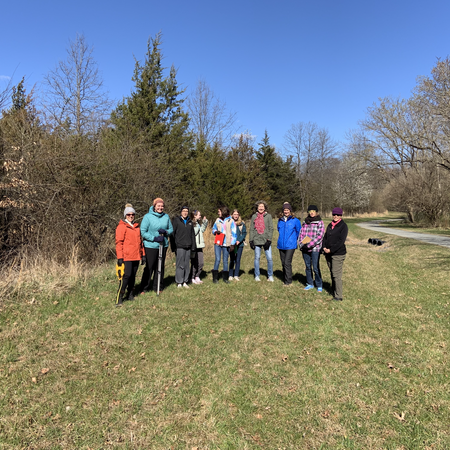On May 6th, we broke ground on out pollinator habitat, funded by AWS InCommunities Northern Viriginia Sustainability Fund. The project is too new to have helped pollinators, but has already had huge community involvement and educational value. Additional funds will allow us to hold a second community planting day in the early fall and maintain the current plot.
Our project drew over 100 volunteers for our planting workday. The project included neighbors of all ages and walks of life, from retirees to elementary school Girls Scouts. Approximately 75 of the volunteers were students from the local high school. Knowing that many students were registered to participate, many of the biology teachers took time in class to explain the project and its importance for the local ecosystem. The large number of volunteers allowed us to remove huge quantities of invasive garlic mustard from Horsepen Run, which will improve the ecological health of the area surrounding our project site.
Three advanced Girls Scouts worked on the project for their Silver Award. They spent many hours of research and work developing bee houses, which will shelter native solitary bees while our pollinator garden matures. It will eventually provide natural solitary bee nesting sites in the form of old hollow flower stems. These scouts are also working on an official website for the project, which will enhance the educational value and provide a mechanism for recruitment of new volunteers for long-term care and maintenance of the pollinator habitat. Additionally, we started a social media site for the project, for the sake of advertising planting events and sharing science-backed information with the community (https://www.facebook.com/hprpollinatorhabitat/). The social media site is maintained by an entomologist who resides in the neighborhood.
We used our funding to purchase ecotype-specific plants native to our county, educational signage, and supplies for marking, clearing, and protecting the habitat site (ex. small flags, sod cutter rental, mulch, deer netting, and watering backpacks). Our generous budget allowed us to buy 16 species of native perennials, allowing us to achieve our goals of supporting a variety of pollinators through different bloom shapes, colors and seasons and many known butterfly and moth caterpillar host plants. We were also able to purchase a custom sign for our habitat, which was an important part of reaching our educational value goal. The sign explains the project to passing neighbors, provides tips for supporting pollinators at home, and connects neighbors to our social media so that they can learn more and get involved.

